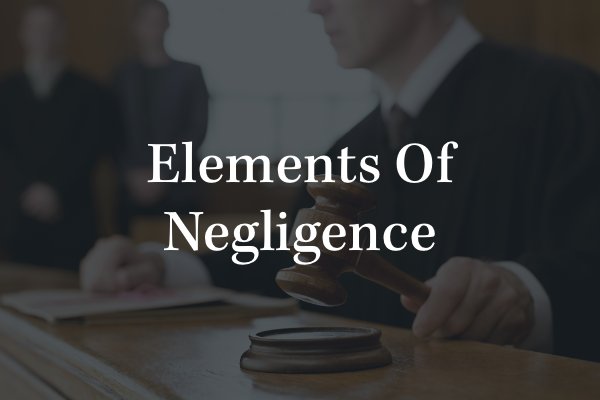When a person sustains an injury caused by the actions of someone else, they must first prove that the four elements of negligence were in place before they can recover compensation for their losses. These four elements need to be in place regardless of whether or not a person is trying to recover damages through an insurance settlement or as a result of a personal injury jury trial.
Duty of Care
The first step for any personal injury claim is establishing that the defendant (the individual or entity accused of causing the injury) did indeed owe a duty of care to the plaintiff (the injury victim). A duty of care will not look the exact same for every single injury claim. In fact, the duty will vary widely depending on the type of incident that occurred. For example, property owners have a duty to ensure the safety of their premises for anyone who has a right to be there. Drivers, on the other hand, have a duty of care to ensure that they operate their vehicles safely so that they do not cause harm to others.
A Philadelphia injury attorney will thoroughly examine the situation to determine whether or not a duty of care was established for the situation.
Breach of Duty
After establishing that there was a duty of care between the plaintiff and the defendant, it will need to be shown that the defendant breached their duty of care in some way. Just like establishing a duty of care, it is important to understand that a breach of duty will look different depending on the type of incident. Property owners can breach their duty of care in a number of ways, including failing to provide regular inspection and maintenance of the premises, failing to clean up spills, or allowing children to play around with attractive nuisances like swimming pools or construction sites.
A driver can breach their duty of care by operating while impaired by alcohol or drugs, while distracted, failing to stop at stop signs, speeding, etc.
Causation
After showing that there was a breach of duty on the part of the defendant, it needs to be shown that this breach is what caused the plaintiff’s injuries. There are some situations where a breach of duty occurs, but the breach is not necessarily the cause of the injuries. For example, if a driver runs a stop sign, it needs to be shown that this direct violation of traffic law is what caused the accident that led to the injuries for the plaintiff.
Damages
The last element of negligence is showing that the plaintiff sustained some sort of compensable loss. Principal losses are comprised of various types of damages, including economic and non-economic. For personal injury claims, the most common types of losses include medical bills, lost wages, property damage expenses, out-of-pocket expenses, pain and suffering damages, loss of quality of life, and more. It is crucial for injury victims to work with a skilled attorney who can help adequately calculate total expected losses.
